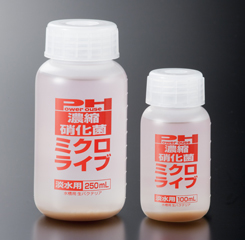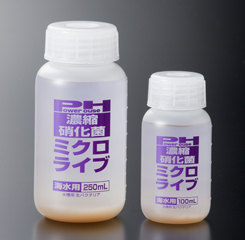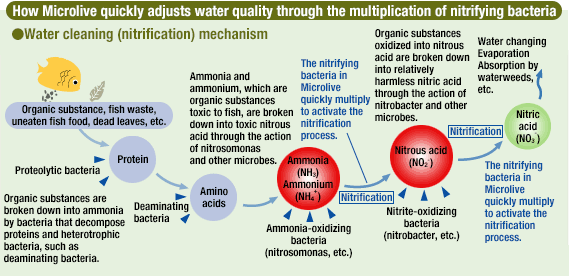
■Ammonia and nitrous acid, which are highly toxic to fish, are constantly occurring due to the breakdown of organic materials in the aquarium, including bodily wastes from fish, uneaten food, and dead plant matter. This has a negative impact on water quality. On the other hand, these toxic substances are ultimately broken down into relatively harmless nitric acid due to the action of nitrifying bacteria. This is known as nitrification, and its process is shown in the figure below.
■However, nitrifying bacteria multiply extremely slowly, normally taking three months in a freshwater aquarium and six months in a saltwater aquarium before they will be fully established. Quickly starting up a new aquarium without any problems hinges on how fast nitrifying bacteria can multiply.
■Microlive is a concentrated culture of a wide variety of nitrifying bacteria. It comes with an activator agent, which means as soon as you add it to your aquarium, nitrifying bacteria start growing and adjust the condition of the water. But by using the appropriate amount when starting a new aquarium, changing water, or conducting normal water quality control, you can dramatically shorten the several-month-timespan necessary to create aquarium water.
●Primary types of nitrifying bacteria in Microlive
Ammonia-oxidizing bacteria |
Nitrite-oxidizing bacteria |
Nitrosomonas |
Nitrobacter |
Nitrosospira |
Nitrospina |
Nitrosococcus |
Nitrococcus |
Nitrosolobus |
Nitrospirae |
Nitrosovibrio |
|
(There have been at least five ammonior and four nitrous acid confirmed.) |
 |


●Price
100mℓ: ¥1,500
250mℓ: ¥3,000
(for both saltwater and freshwater)
|



